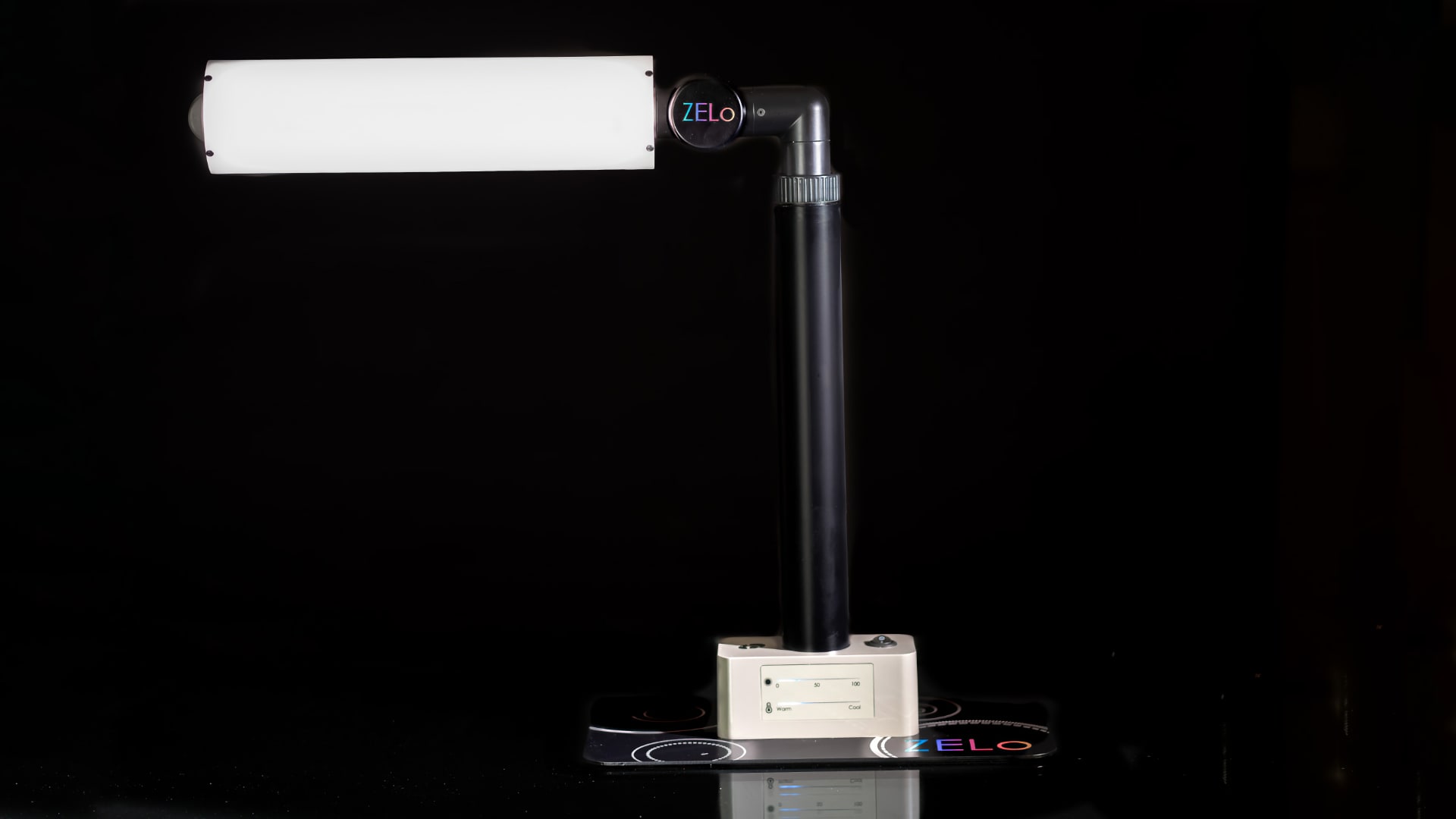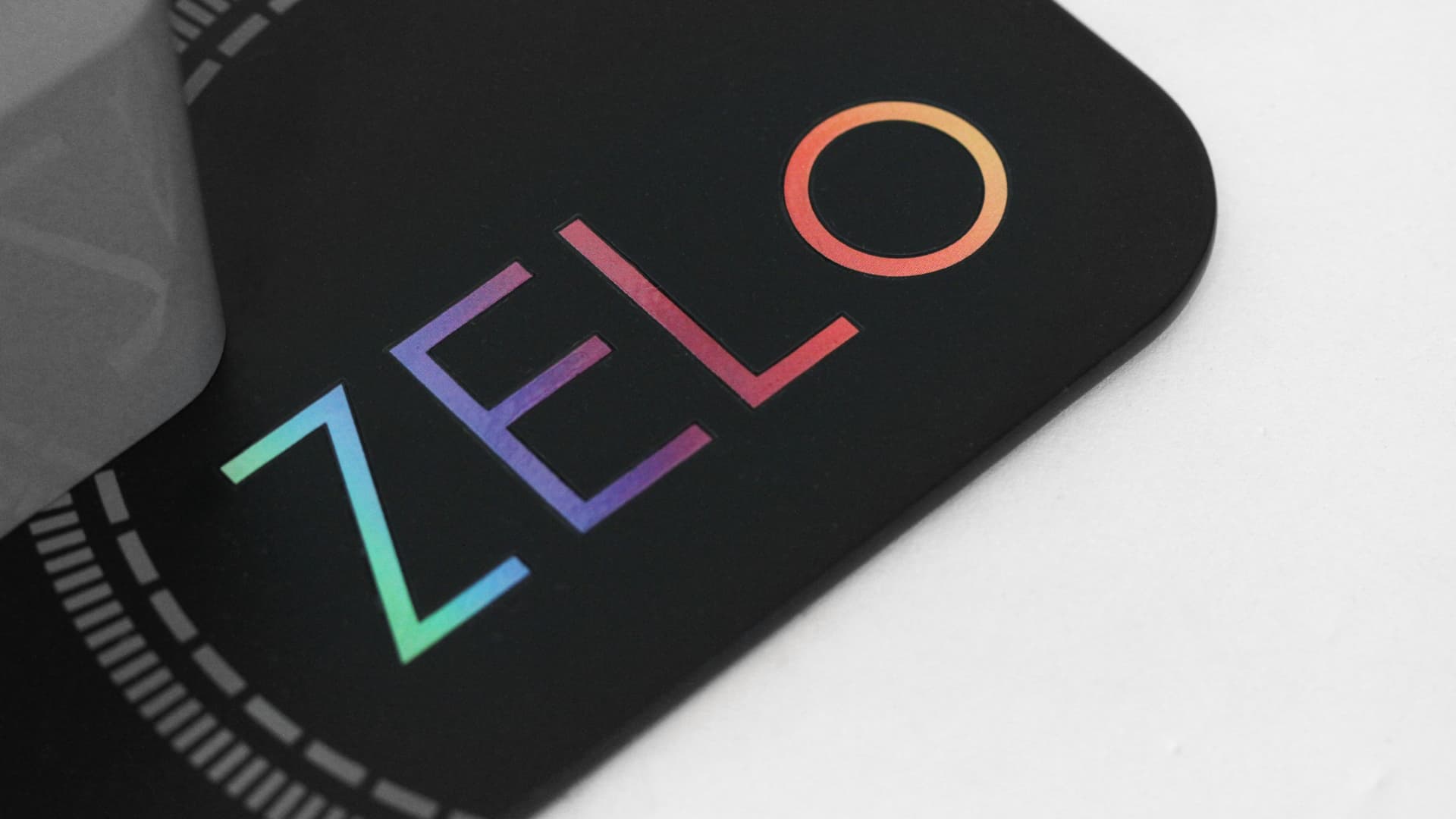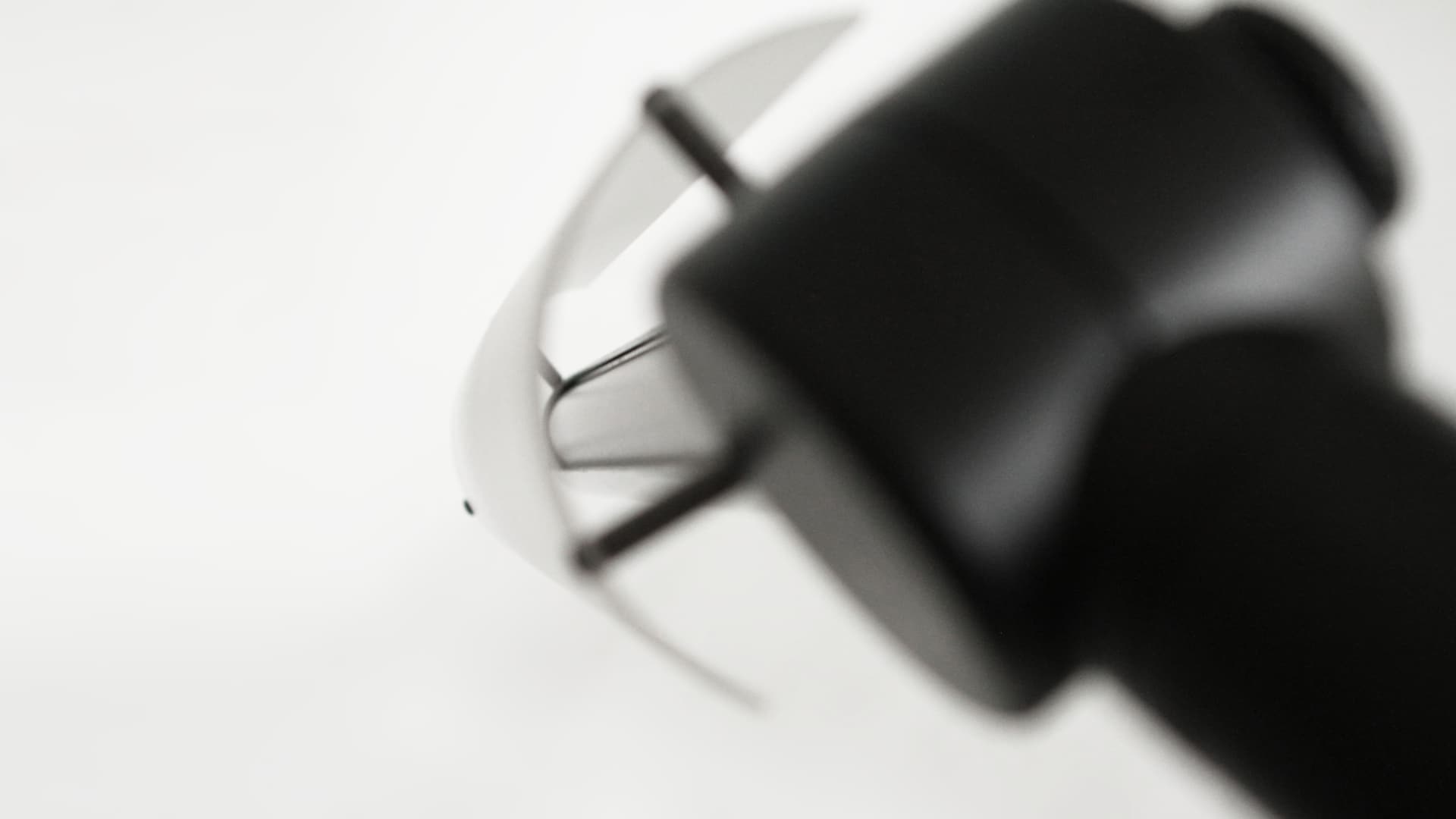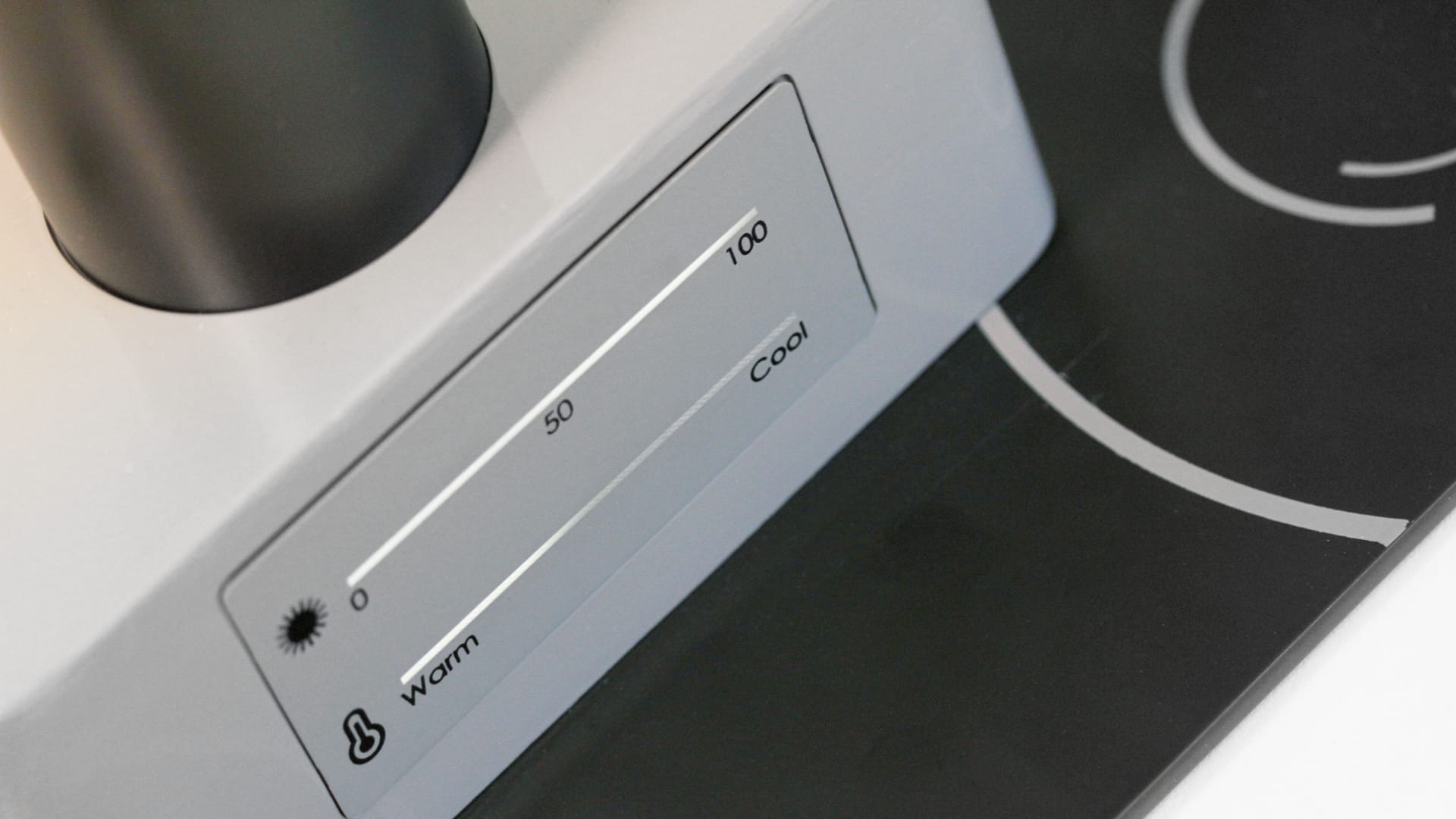
The Brightline ZELo has been around for a while now, but uses a good deal of Brightline’s studio expertise to produce a LED that’s a league above your average ring light.
Shifting media production away from dedicated industrial facilities to boardrooms and bedrooms is a relatively recent phenomenon in century-long history of moving images. That’s created a market for camera and lighting equipment which doesn’t make the room look like a TV studio, and that’s a market Brightline is addressing with ZELo. It’s a light intended to unobtrusively flatter Twitch streamers while leaving room on the desk for a mouse mat and a cup of coffee.
Brightline has a selection of lighting built for broadcast studios as well as devices intended to work unobtrusively in office environments. ZELo is something of a new idea, being designed for people working from the spare bedroom as a game streamer, or people who’re presenting YouTube videos with the camera looking at a desktop. The company could just as well sell it to artists who want to be able to see paint or fabric colours accurately when working after dark. It’s always been possible to do that sort of thing with a small LED on a magic arm, but that’s a solution intended for quick setup and teardown, and it’s not like to occur to someone making a living from video games and social media.
Physical build

The base is a simple piece of flat steel; there's also a desk edge clamp
ZELo is a light in the 20-watt range (based on the fact that the accompanying wall wart is a 24-volt, one-amp type). It’s chunkier than a conventional desk lamp, with a big flat steel baseplate for stability, though there’s a desk-edge clamp option which might suit some people better. There are controls for intensity and colour temperature on the box at the bottom. A cellphone application (which demands the creation of a user account, obnoxiously) provides access to effectively the same two control sliders plus integration with both Google Assistant and Alexa (the voice-activated Amazon product, not the camera).
The physical build is sturdy, with a twist lock for the vertical extension and two axes of adjustment on the end. A significant amount of metal is used in the construction which inevitably leads to weight but also to a welcome impression of solidity. Some users might have preferred a sort of anglepoise arrangement so the light could reach out over a monitor, but that’d be a very different, more spindly device. Still, it probably has enough lateral reach to accommodate common desktop setups.

Peering between the diffuser and the emitter tube in the middle reveals how the light is set up optically
The light itself is effectively a tube light slightly over a foot long, although there are two layers of diffusion which together create an emitting surface in the form of a partial tube which would be about 100mm in diameter if it were complete. The double diffuser design probably isn’t particularly efficient, optically, but it’s a reasonably sculptural object and minimises the inclination to squint. In terms of sheer softness, the output naturally doesn’t compete with a huge silk or bounce, but it’s likely to be used at fairly close range, and in that context it’s nicer than most compact lights in terms of its ability to create pretty facial closeups.
Colour quality also matters given that at least some of the customers for this light will probably be considering it after having noticed how jaundiced they look in the light of a conventional domestic LED lightbulb. To be fair, creating a reasonably straightforward variable colour temperature light is no longer rocket science, and a design like this probably only needs two different types of emitter. The colour temperature scale is not calibrated so there’s no way to set a specific number from the front panel, although online information suggests that ZELo should be able to swing between 2700K and 6500K.
Colour testing

This is as much CT control as we get, but it’s enough to match it to an ambient
Normally, we’d test at a predetermined series of colour temperatures, but on the ZELo the best approach seemed to be to test at maximum, minimum, and somewhere in the middle. The example light sent for testing measured around 2600K at the bottom end and 5900K at the high end, which means it isn’t quite achieving the paper spec. To be clear, though, the higher the CT, the smaller the visible difference between them. The difference between 6500 and 5900 is only a mired shift of 16, or less than a one-eighth CT blue. A position halfway down the colour temperature bar graph measures around 3700K. The result is a reasonably visually linear transition between the cooler and warmer ends of the scale, although people in interiors lit principally by tungsten, or by tungsten-esque household LEDs, will probably end up more toward the bottom of the range.
Measurements were taken with a UPRTek CV600 colour meter at each of these CTs, at full, half, and minimum intensity. At a metre, intensity is about 280lx at maximum CT, falling slightly to 240lx at minimum CT. The light seems to implement a constant-output algorithm, with that small output falloff fairly linear from maximum to minimum CT. TLCI is never less than 96.1, found at maximum output and minimum CT. That’s also where the least good R9 red pops up – but “least good” is relative. At 87.9, R9 the nadir remains way, way better than it needs to be for perfectly reasonable results. R12 blues are similarly good, and never less than 91, which is unusual. There is a very subtle drift toward the magenta at intermediate CTs as we’d expect from a two-channel, variable-CT light, though pink in the middle is probably better than green at the ends.
A ring beater
So the Brightline ZELo certainly does what it’s intended to do; it is essentially a heavily-built desk light with some extra diffusion and really very good colour quality. Some people might find the industrial design a little unsubtle – it’s two tubes at right angles, on a box – although that might be seen as minimalism. What it competes with most closely is probably all those ring lights which have become more or less the go-to for YouTube auteurs. The ZELo clearly isn’t intended to create a similar effect, although if it offers an opportunity for people to escape the pancake-flat ring light effect that’s currently in fashion, that’s a good thing.
At $229, it may come off as a little expensive for a variable-CT LED in its power class, but in terms of exactly what it is, how it’s made, and what it’s intended to do, it’s an unusual idea. A cheer for the originality, then, another for the very decent colour quality, and one more out of sheer respect for seeing something that is just a little bit new and serves a rather neglected market.
Tags: Production Lighting Streaming


Comments